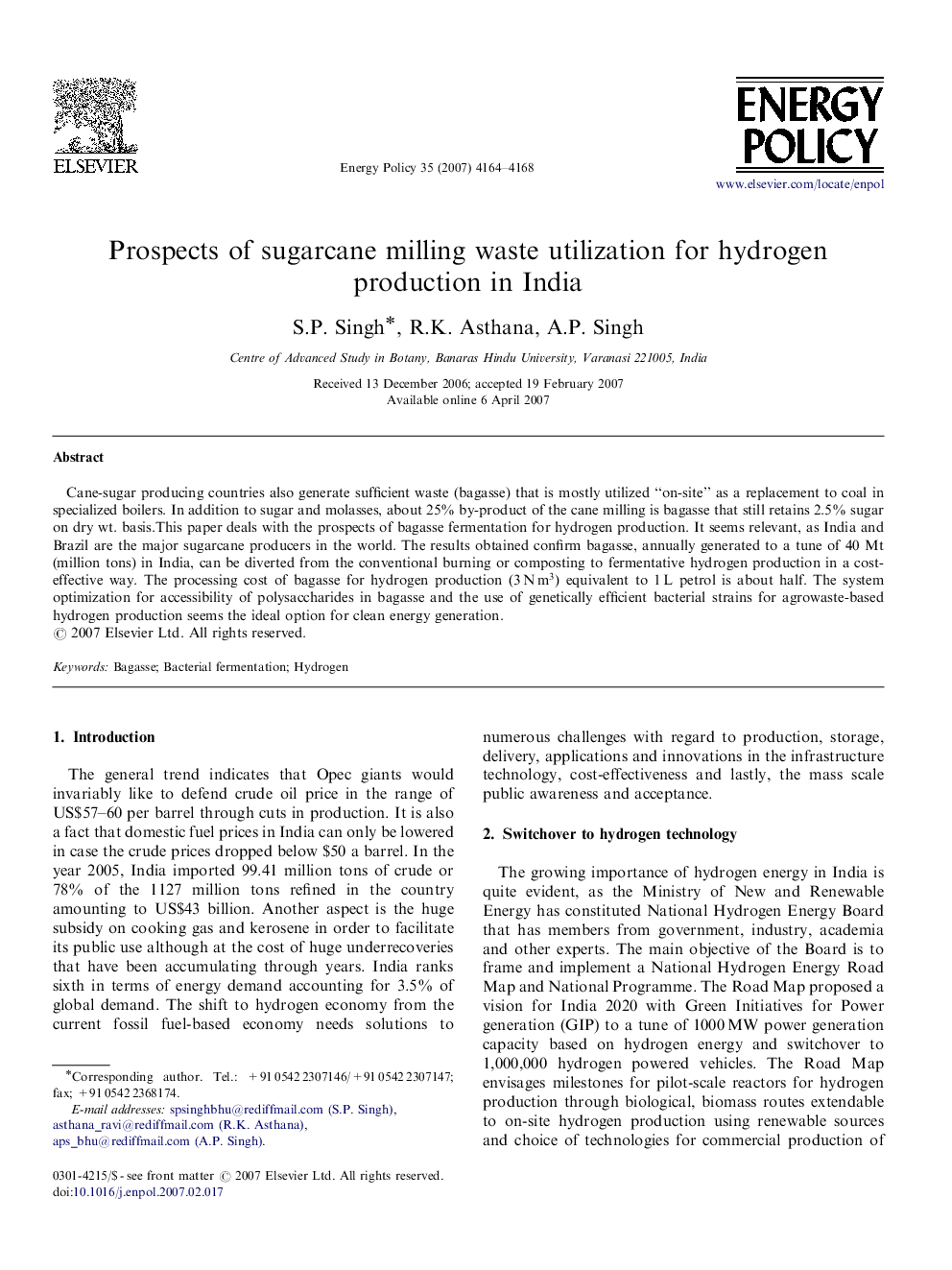| Article ID | Journal | Published Year | Pages | File Type |
|---|---|---|---|---|
| 995385 | Energy Policy | 2007 | 5 Pages |
Cane-sugar producing countries also generate sufficient waste (bagasse) that is mostly utilized “on-site” as a replacement to coal in specialized boilers. In addition to sugar and molasses, about 25% by-product of the cane milling is bagasse that still retains 2.5% sugar on dry wt. basis.This paper deals with the prospects of bagasse fermentation for hydrogen production. It seems relevant, as India and Brazil are the major sugarcane producers in the world. The results obtained confirm bagasse, annually generated to a tune of 40 Mt (million tons) in India, can be diverted from the conventional burning or composting to fermentative hydrogen production in a cost-effective way. The processing cost of bagasse for hydrogen production (3Nm3) equivalent to 1 L petrol is about half. The system optimization for accessibility of polysaccharides in bagasse and the use of genetically efficient bacterial strains for agrowaste-based hydrogen production seems the ideal option for clean energy generation.
